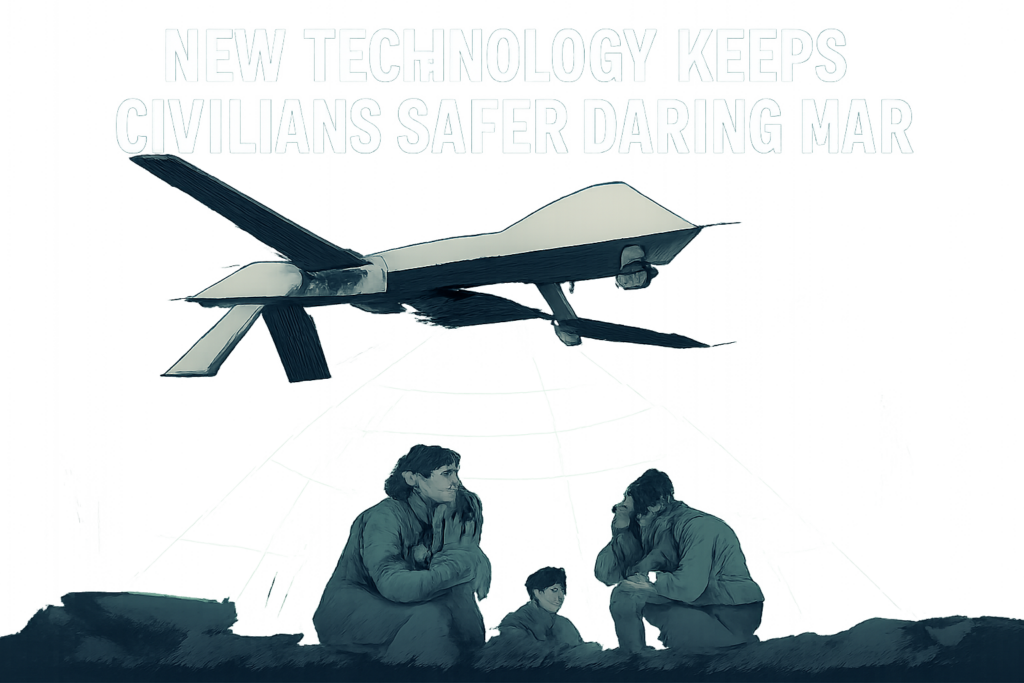which new technology keeps civilians safer during war?
Modern warfare puts civilians at risk in ways that are hard to imagine. As conflicts evolve, so do the technologies that aim to protect the innocent. The question “which new technology keeps civilians safer during war?” is more pressing than ever. Here’s a look at recent advances making a difference on the ground, their strengths and some things to keep in mind.
Early Warning Systems: Staying a Step Ahead
One of the most impactful developments is the use of advanced early warning systems. Leveraging sensors, satellites, and AI-powered analytics, these systems can often detect incoming threats like airstrikes or missile launches. Civilians now receive real-time alerts via smartphones or sirens, giving them precious minutes—sometimes even seconds—to find shelter. This can save lives, especially in areas where attacks once came without warning.
Strengths
- Fast, automated information flow
- Wide coverage using existing networks
- Often cheap for governments to implement
Limitations
- Dependent on mobile connectivity
- Can be less effective during surprise or unconventional attacks
Drones: Eyes in the Sky for Protection
Unmanned aerial vehicles aren’t just offensive tools; humanitarian organizations are adopting drones to map safe evacuation routes, deliver emergency medical supplies, and monitor shifts in conflict zones. The ability to assess danger from the air in real time helps aid crews design more secure escape corridors or drop supplies directly where civilians are trapped.
Pros
- Reduces risks for aid workers
- Brings help into hard-to-reach places
- Guides civilians away from conflict hotspots
Cons
- Risk of drone misuse or misidentification
- Can be jammed or destroyed
Secure Communications for Families and First Responders
Digital communication is a lifeline in war. Secure apps using end-to-end encryption allow civilians and emergency teams to share location, health, or distress calls without interception by hostile forces. Group messaging, GPS tracking, and SOS features can help locate missing persons or coordinate evacuations—sometimes under a communications blackout.
Advantages
- Protects privacy and sensitive information
- Maintains contact when traditional lines are cut
Downsides
- Tech literacy required
- Network outages still a risk
Smart Shelters and Resilient Infrastructure
Urban warfare has highlighted the need for civilian shelters that withstand modern threats. Some new shelters use blast-resistant materials and advanced filtration systems to guard against chemical attacks or biohazards. Modular designs mean they can be deployed quickly where needed. Beyond shelters, resilient infrastructure—smart power grids, decentralized water supplies—reduces reliance on fragile city services.
Realistic Outlook
It’s worth remembering that no technology is foolproof. Wartime chaos can outpace even the best systems. There’s also the danger of humanitarian tech being misused for surveillance or as a military target itself.
Final Thoughts
Which new technology keeps civilians safer during war? There isn’t a single answer, but rather a growing toolkit: early warning apps, drones for humanitarian aid, secure messaging, and smarter shelters. Each innovation buys time, saves lives, and gives civilians a fighting chance. Staying informed about these tools—and supporting their fair use—matters for anyone concerned with humanitarian safety in conflict zones.

 Charleson Youngoron
Is the visionary founder of Winder Sportisa, a company dedicated to excellence in the sports industry. With a passion for both sports and business, Charleson has combined his extensive knowledge and experience to create a dynamic organization that prioritizes community, integrity, and innovation. Under his leadership, Winder Sportisa has grown into a respected name, known for its commitment to creating an inclusive and supportive environment. Charleson's dedication to these core values has been instrumental in shaping the company's culture and guiding its success. His forward-thinking approach and unwavering commitment to quality continue to drive Winder Sportisa to new heights.
Charleson Youngoron
Is the visionary founder of Winder Sportisa, a company dedicated to excellence in the sports industry. With a passion for both sports and business, Charleson has combined his extensive knowledge and experience to create a dynamic organization that prioritizes community, integrity, and innovation. Under his leadership, Winder Sportisa has grown into a respected name, known for its commitment to creating an inclusive and supportive environment. Charleson's dedication to these core values has been instrumental in shaping the company's culture and guiding its success. His forward-thinking approach and unwavering commitment to quality continue to drive Winder Sportisa to new heights.
